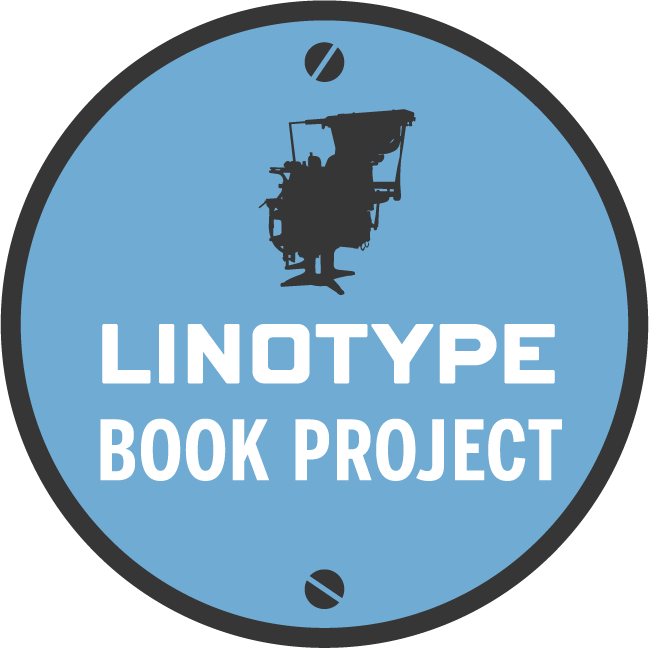Issue № 14 - I Found a Gold Mine in the Middle of NYC
The more you search, the more you uncover and I just found something very special! As Robert Caro says, “Turn every page…”

Issue № 14 - I Found a Gold Mine in the Middle of New York City
About a year ago, I came across a small listing on the New York Public Library website that mentioned a holding of 70 “scrapbooks” from the Mergenthaler Linotype Company. My curiosity was piqued — often, large companies would collect newspaper articles about their company and the press of their competitors, but what the heck was this?
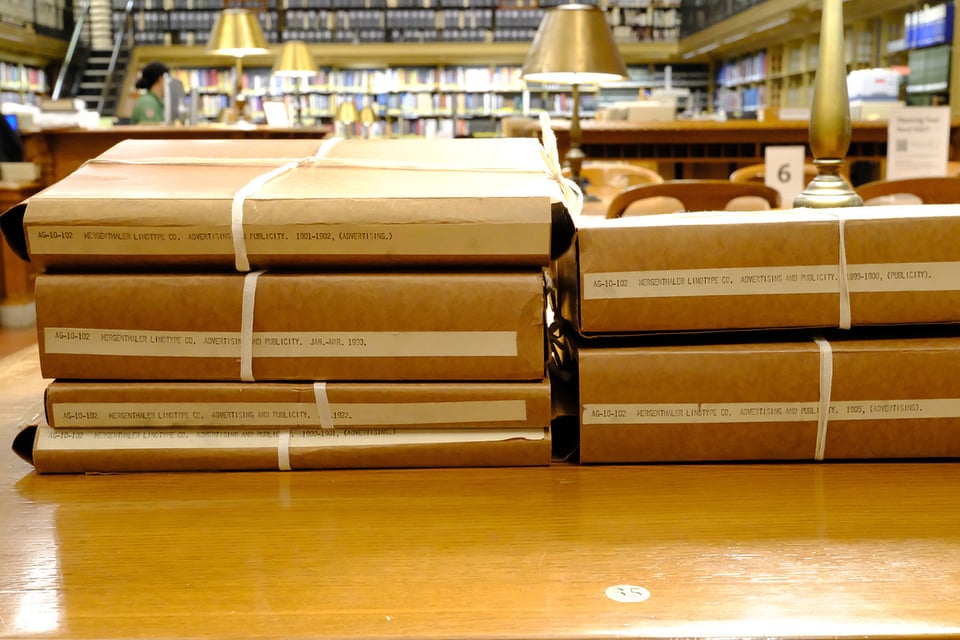
Well, a few weeks back, I was lucky enough to be in NYC for work. I planned a few hours before meetings and requested six of these scrapbooks from offsite storage (in New Jersey I later learned) to see if they held anything interesting for my book.
And my goodness, did they ever!
Revealing Things Lost to Time
Inside the scrapbooks were a metaphorical gold mine of newspaper clippings, advertisements, and promotional materials — many of it not seen since they were were donated to the NYPL in the 1960s, according to one of the librarians.
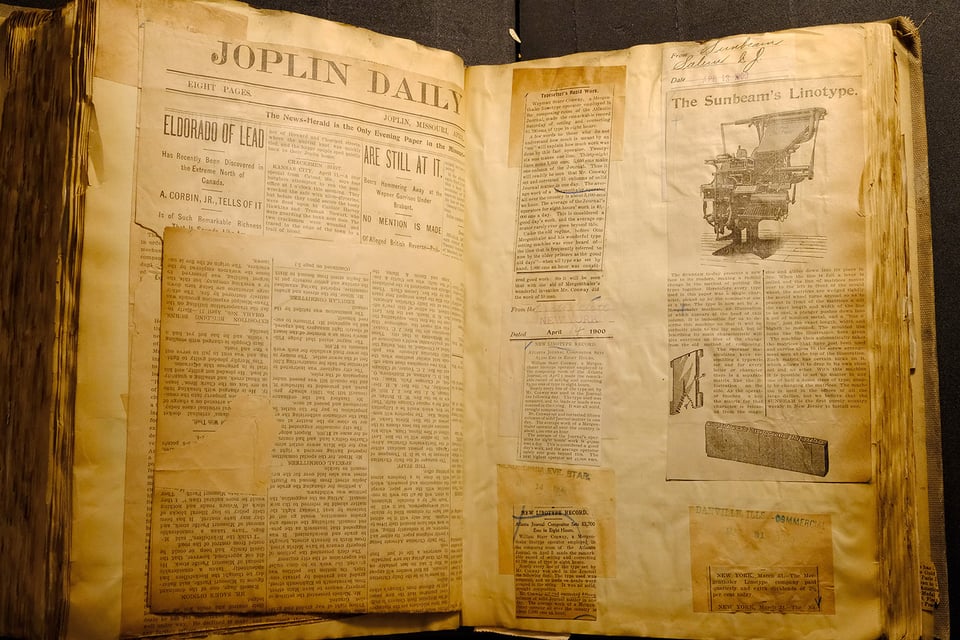
Inside the oldest scrapbook (containing things from 1898 and earlier) I found two previously-unknown type specimen catalogues of Linotype’s earliest typefaces, marketing material for the Spanish-language market, Annual Reports from the earliest years, and plenty of hard-sell ads attempting to convince a skeptical print industry that the Linotype really did deliver on the promise of revolutionizing typesetting and communication.
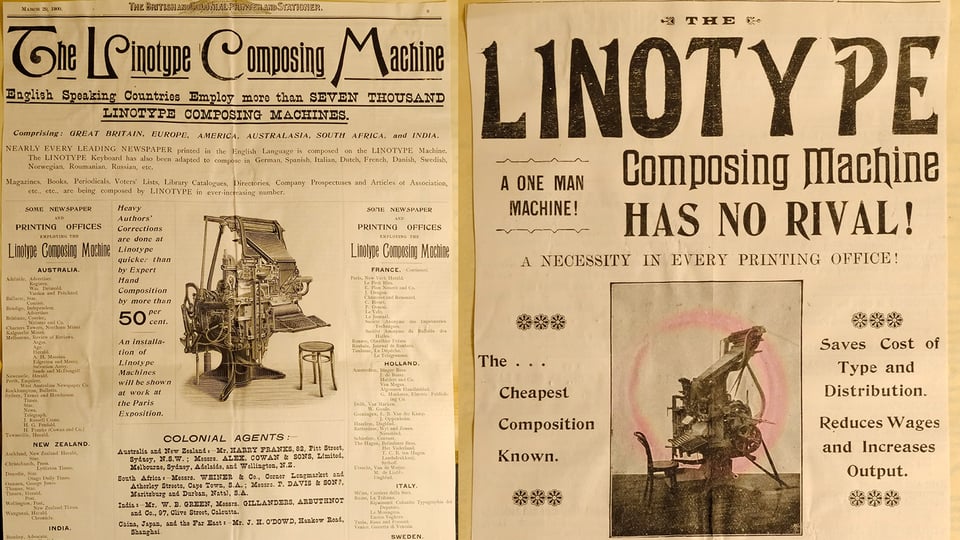
After emailing Frank Romano for the millionth time, he responded and said he remembers seeing these scrapbooks in the office of Mike Parker, Linotype’s Director of Typographic Development in the 1960s.
“Mike Parker had the best office at Linotype with built-in mahogany bookcases. He had Ottmar’s notebooks and a small collection of other material. It was decided that the notebooks would go to Plainview [NY], but the other material would go to NYPL. Mike had a relationship with NYPL. From 1960 to 1980 there was a permanent exhibit at NYPL on how Linotype made type.”
If you would like to see more photos from my quick visit to see these scrapbooks, go to my Flickr album.
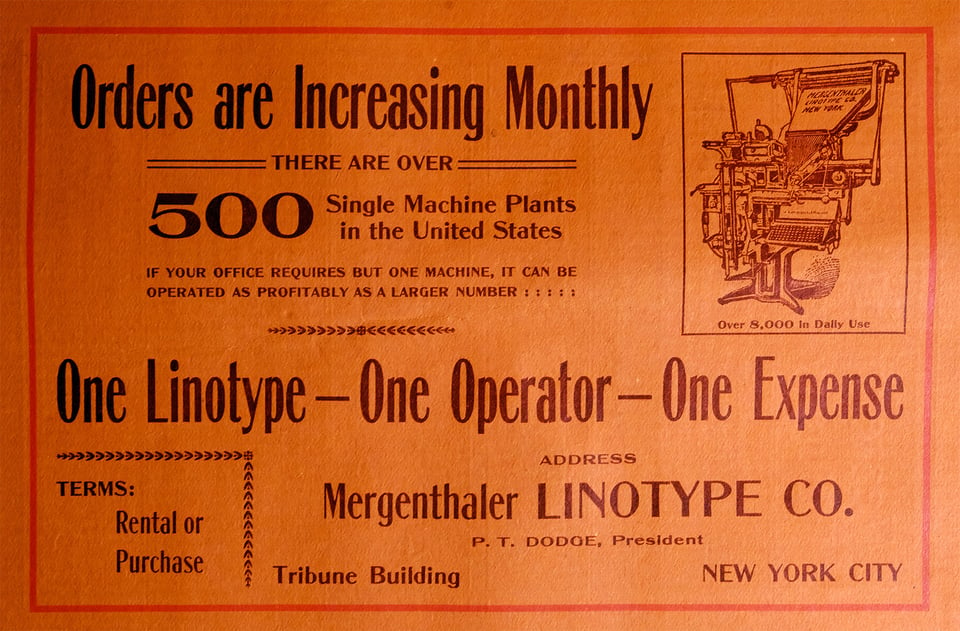
Making Tough Choices

A quick story: Back in 2011, I was invited to the ATypI conference in Reykjavík, Iceland to speak about “Linotype: The Film” which was slated to come out the following year. This was after we had wrapped filming and were deep in the editing process. I desperately wanted to visit Iceland and I had never been to an ATypI conference, so I was 100% committed to going.

But I knew I had to be responsible and think of the larger goal, which was editing and finishing the dang film. If I spent time and money going to Iceland, it would negatively impact the film. Any trip and presentation takes resources, and we were hilariously low on resources at the end of production.
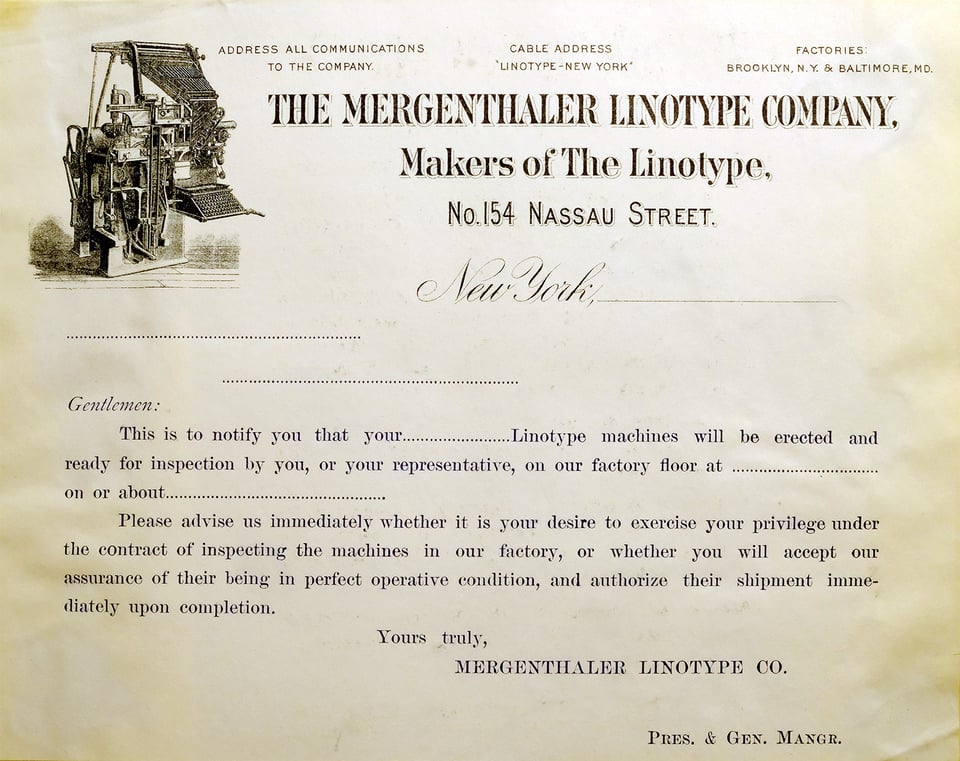
So I made one of the harder choices of my career and turned down the opportunity to present in Reykjavík. It was the right decision, but it wasn’t easy. I still haven’t been to Iceland, but as you have read in previous newsletters, I’ve been able to attend two ATypI conferences since then. If anyone wants to invite me to Iceland, I’m still ready and willing ;-)
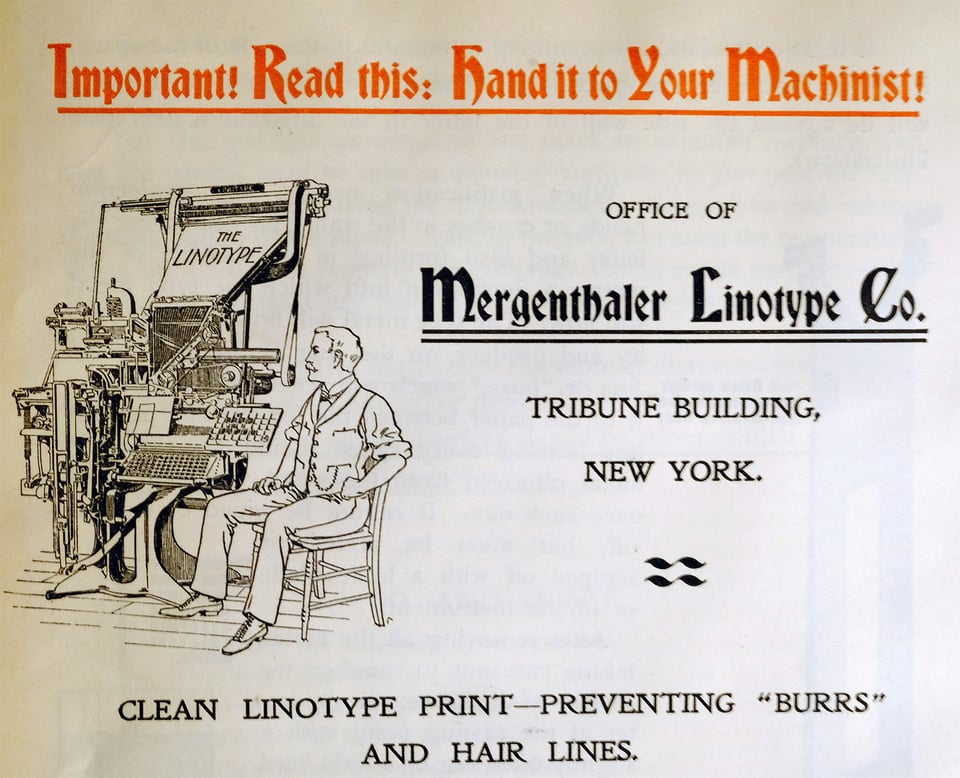
Finding a Research Assistant
How does this relate to the book project, you may be asking? Well, I only was able to view six of the 70 Linotype scrapbooks stored at the NYPL. It took complex planning to request them in advance, give them time to arrive from offsite storage, and three hours to quickly go through them and photograph what I found.
I now knew that they contained some real golden nuggets, but if I went through all remaining 64 books, how much new would I actually uncover that would contribute to this project? Doing some quick math, I would need a full week at the NYPL — in one of the most expensive cities in the world — in order to dig through all of these.

I was struggling with a combo of curiosity and fear: Curious what was in the other 64 scrapbooks, and fear that if I didn’t meticulously go through each one personally, I would miss something special and important. The completest in me couldn’t have that hanging over my head for the rest of my life… Also factoring into my planning was the upcoming trip that I need to take to the Smithsonian American History Museum, which I mentioned in Newsletter № 12.
With this in mind, I chose to hire research assistant Jacob Ford to photograph and document the remaining scrapbooks since he lives in NYC and has done similar work in the past. We’ve got a system in place and throughout the summer he will be methodically documenting these scrapbooks. Let’s hope there are more pieces of gold to be discovered!
The Spectre of Robert Caro

And speaking of another “gold mine in the middle of NYC,” I have been thinking a lot about a giant in the field of non-fiction writing; Robert Caro.
As with any work of creation, I am standing on the shoulders of those who have trod this path before. Thinking back to my film, Gary Hustwit’s “Helvetica” showed me how a design film could find its audience. I’ve seen the toil and success of Marcin Wichary’s “Shift Happens” on the history of the keyboard. And last year, I completed a year-long podcast series going through Caro’s “The Power Broker” (which I highly recommend) which showed me how to put life into dry facts and figures.
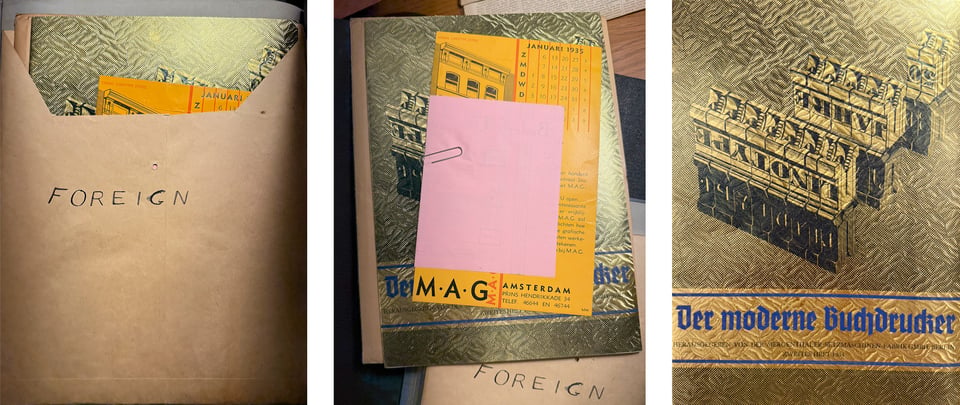
Honestly, using the word “spectre” in this heading is the wrong choice because it means “ghost” or “disembodied spirit” and Robert A. Caro is (thankfully) very much alive and continuing to write daily. Caro’s mantra of “turn every page” sits in the back of my head as I’m researching, but I often want to yell back, “I get it; but at some point I have to write the dang thing, Robert!” (In this fictitious narrative, we are on a first-name basis).
In this fantastic feature on Caro and his wife, Ina, he says, “I believe you can learn things by just keeping reporting,” and I realize that is what I’m doing with these newsletters — I’m reporting what I found to an interested audience.
Building a True Audience
With every picture I share I’m saying, “Look at this cool thing! Can you believe it still exists and informs a tiny bit more on the story of the Linotype?” I tell you stories of stumbling upon a dusty box of images in a tiny German town because I wish all of you could be with me during the discovery.
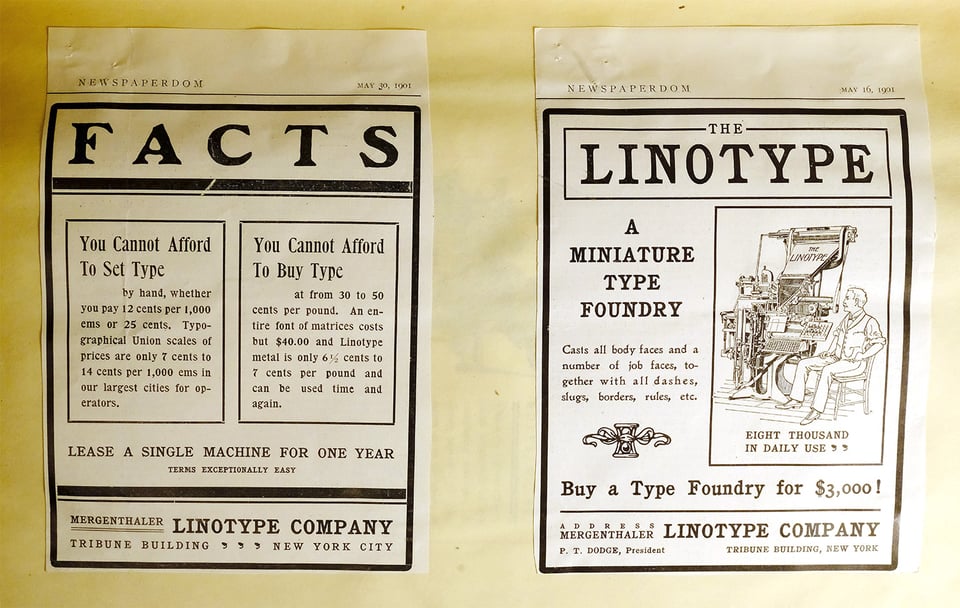
Writing and researching is a lonely, solo affair most of the time and requires discipline to keep moving forward. At the beginning of creating this newsletter, I thought I was simply collecting subscribers who might eventually buy my book. But now, I realize it serves a much greater purpose because I need people like you to keep me from feeling alone in this long marathon which I so glibly announced exactly two years ago.
Because if I can’t share what I’ve discovered from these stacks of books, research trips, and binders full of reference materials — what’s the point?
Always in curiosity,
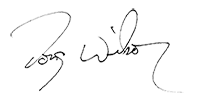
Doug

